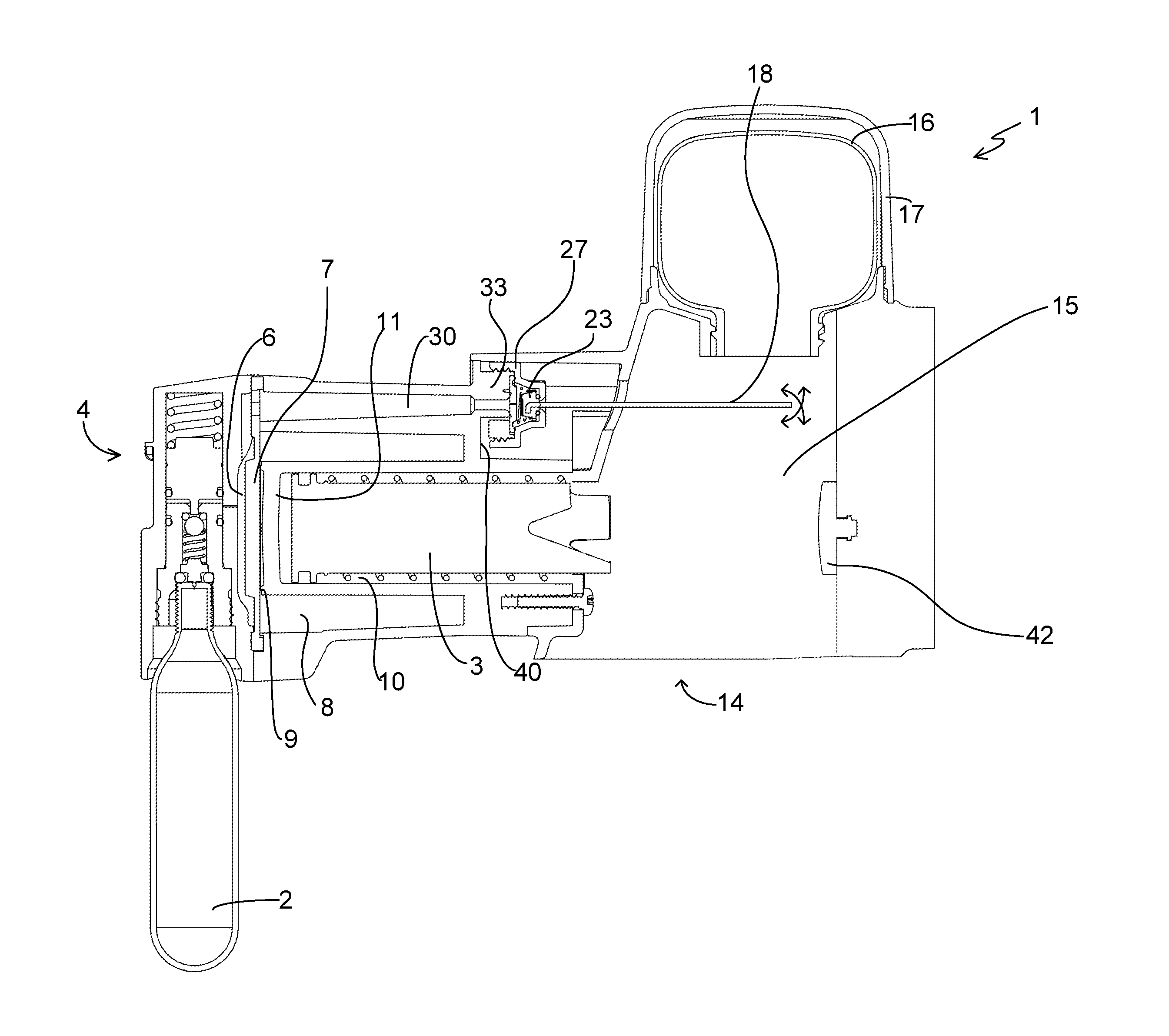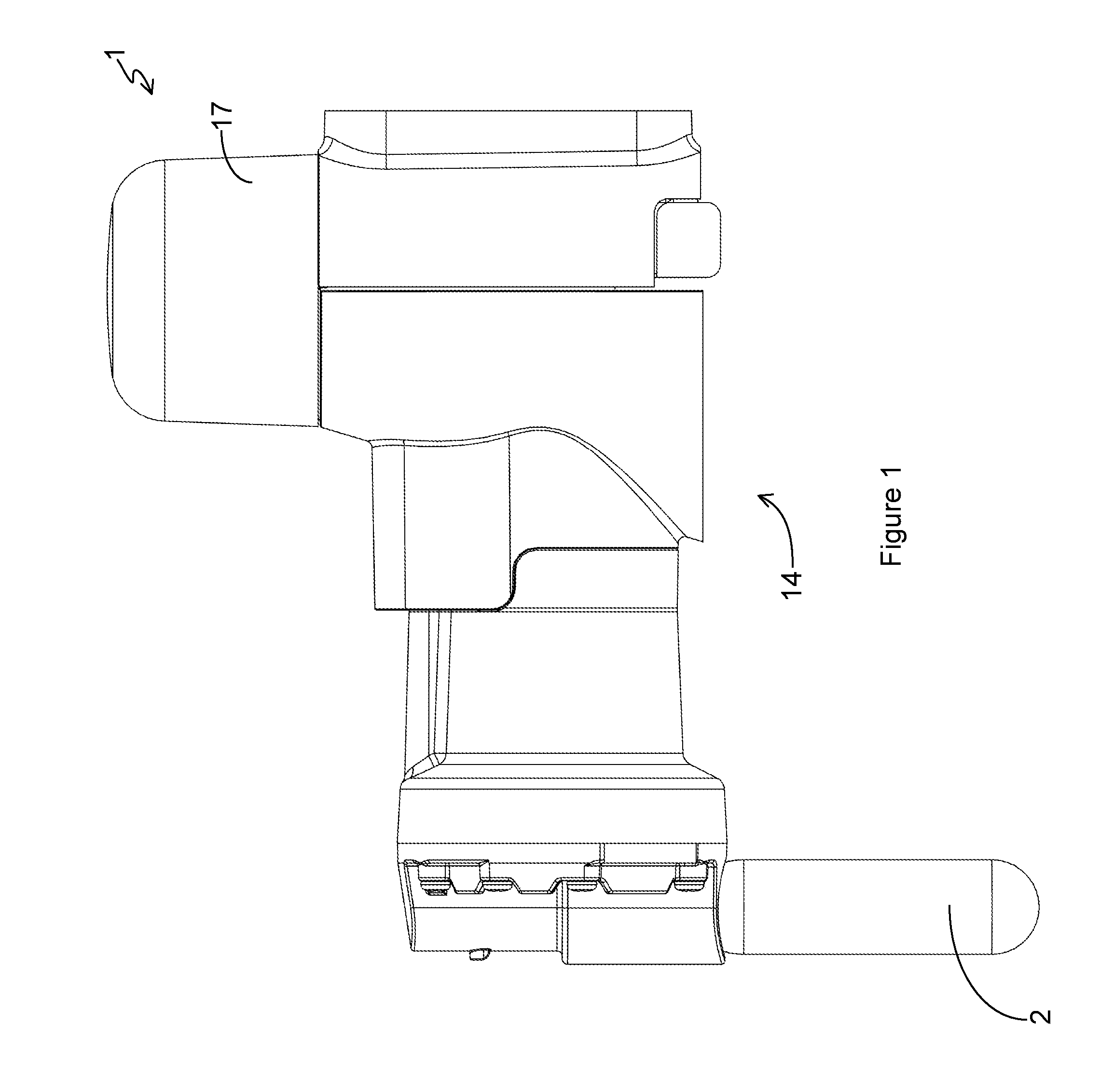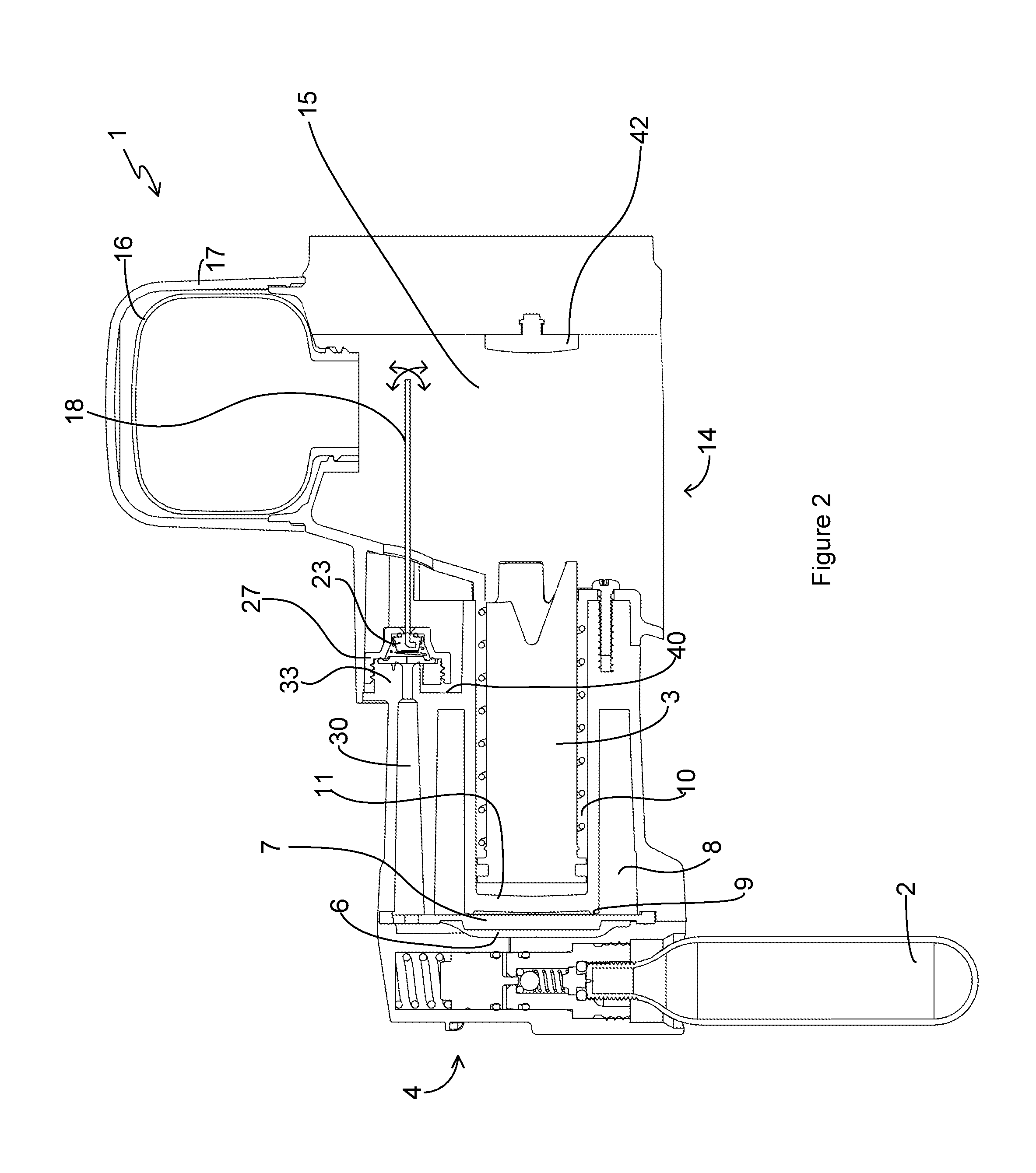Animal traps and trigger mechanisms
a technology of trigger mechanism and animal trap, which is applied in the field of animal traps, can solve the problems of reducing the efficiency of a pest control programme, unpractical, and unsatisfactory emptying of a trap
- Summary
- Abstract
- Description
- Claims
- Application Information
AI Technical Summary
Benefits of technology
Problems solved by technology
Method used
Image
Examples
Embodiment Construction
[0054]FIG. 1 is a side view, FIG. 2 is a cross-section and FIG. 3 is an exploded view of a trap 1 according to one embodiment. The trap 1 includes a source of compressed gas 2, in the embodiment shown as a canister. The trap 1 also includes a flow control arrangement (described in detail below) designed to control gas flow for operation of a kill mechanism 3 by compressed gas drawn from source 2. However, other power sources may be used in some embodiments, such as sources of electricity or mechanical power.
[0055]The source 2 of compressed gas may be a canister (such as a readily available CO2 canister), cylinder or any form of suitable reservoir for holding pressurised gas. The gas may be stored in a solid form within the source, being released from the source as a gas (as is the case with some CO2 canisters). Such canisters are easily replaced when empty or as part of a routine servicing of the trap. Other sources of compressed gas can be re-pressurised. For example, some reservoi...
PUM
 Login to View More
Login to View More Abstract
Description
Claims
Application Information
 Login to View More
Login to View More - R&D
- Intellectual Property
- Life Sciences
- Materials
- Tech Scout
- Unparalleled Data Quality
- Higher Quality Content
- 60% Fewer Hallucinations
Browse by: Latest US Patents, China's latest patents, Technical Efficacy Thesaurus, Application Domain, Technology Topic, Popular Technical Reports.
© 2025 PatSnap. All rights reserved.Legal|Privacy policy|Modern Slavery Act Transparency Statement|Sitemap|About US| Contact US: help@patsnap.com



